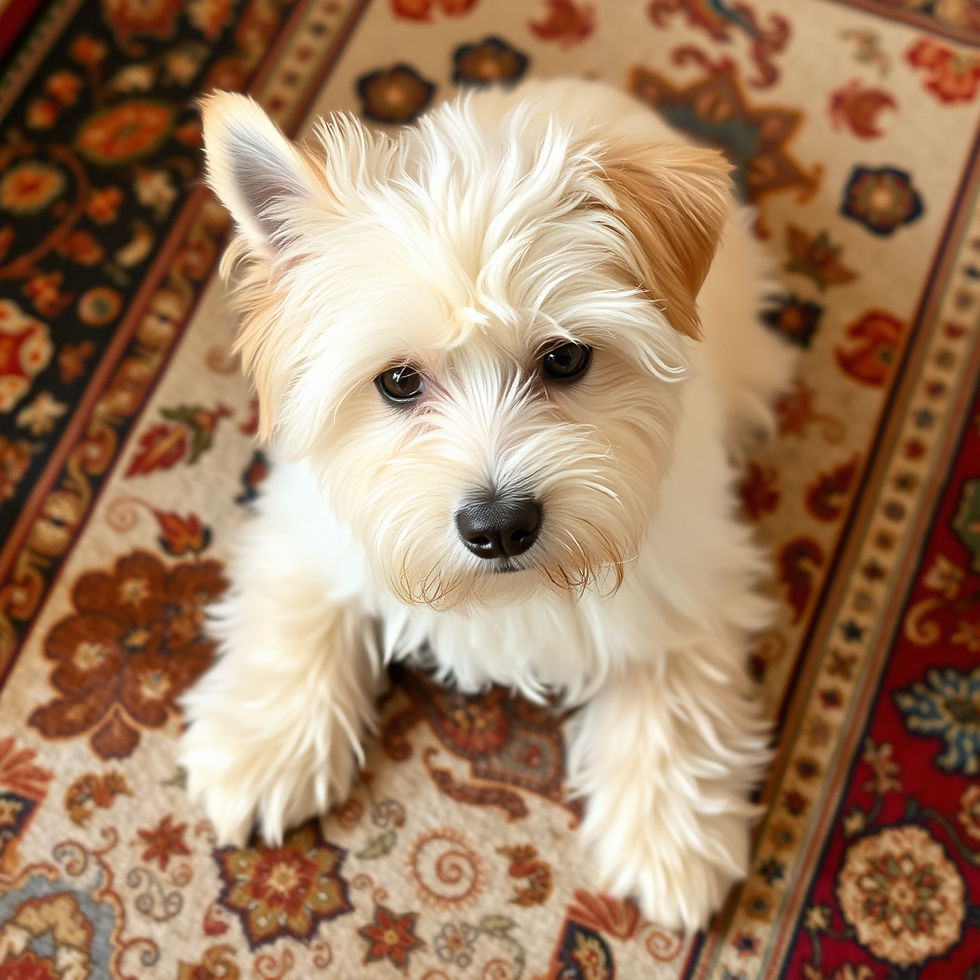How to Clean a Persian Rug: Expert Tips from SoCal Rug Masters
- SoCal Rug Masters

- Jul 3
- 4 min read
Updated: Aug 11
Persian carpets are timeless pieces of art, handcrafted with precision and woven from natural fibers like wool and silk. As delicate heirlooms, they require special care to preserve their structure, color, and value. At SoCal Rug Masters, we specialize in oriental rug cleanings and restoration, using proven methods that avoid the risk of damage. This guide outlines the best practices for safe, effective cleaning—along with insight into when it’s time to call the professionals.
Understanding Persian Rugs
Historical Significance and Material Composition
Persian rugs are rich in heritage and craftsmanship. They often feature intricate patterns, plant-based dyes, hand-sponed yarns and hand-tied knots. These rugs are typically made of natural fibers that require gentle treatment. Harsh chemicals or incorrect techniques—like steam cleaning—can result in irreversible harm. This makes professional insight critical to their longevity.
Preparing for Cleaning
Removing Dirt and Dust Through Vacuuming
Routine maintenance starts with gentle vacuuming. Avoid vacuums with a beater bar, specially around the edge of the rug which can damage fibers. Instead, use a vacuum with adjustable suction and clean both sides, especially if the rug is placed in a high-traffic area.
Sweeping and Shaking Techniques
Light sweeping with a soft-bristled broom or carefully shaking out the rug can also help remove loose dirt. Always support the structure when handling larger rugs to avoid damaging the weave.
Handling Rug Fringes
Protecting and Cleaning Delicate Fringes
Fringes are especially delicate and often prone to tangling or fraying. Avoid vacuuming them, sweeping and shaking the fringes would remove the dirt. Never scrub or use a steam cleaner—it can weaken the fringe's foundation. Washing your rugs every few years by a rug cleaning professional would be a preferred method of cleaning the fringes.
Consulting Rug Labels
Importance of Label Instructions and Guidelines
Before using any cleaning products, consult the rug’s care label. It provides critical information on fiber type, safe detergents, and whether it requires professional cleaning service. When unsure, the experts at SoCal Rug Masters can assess your rug and recommend a safe, tailored cleaning process.
Preventing Dirt Accumulation
Establishing a No-Shoes Policy
Minimize dirt buildup by enforcing a no-shoes rule in rug-heavy areas. Dirt particles can embed in the fibers, causing abrasion over time—especially in high-traffic areas.
Spot Cleaning Techniques
Immediate Response to Spills
Quick action can prevent permanent stains. Remove the solid particles, blot (never rub) with paper towels, or a clean white cotton towel absorbing as much liquid as possible. Avoid using hot water, which may set stains.
Choosing Appropriate Cleaning Solutions
Create a mild solution of warm water, mild detergent, and white vinegar. Test it on a hidden area first. Apply using a soft sponge, blot dry with a clean towel, and rinse thoroughly with clean water to avoid residue buildup. Make sure your rug is 100% dry after you initial spot cleaning by placing fans and other drying devices.
Avoiding Harmful Cleaning Methods
Risks of Steam Cleaning and Harsh Chemicals
Avoid steam cleaning, as heat and moisture can destabilize dyes and shrink natural fibers. Commercial cleaners containing ammonia or bleach can also degrade delicate fibers. Instead, trust professional rug cleaners like SoCal Rug Masters, who use safe, industry-approved techniques.
Rinsing and Drying Properly
Effective Rinsing Techniques
Once cleaned, rinse the rug thoroughly with clean water. Remaining detergent can attract dirt and stiffen the fibers.
Importance of Fast Drying to Prevent Mold
Dry the rug quickly to avoid musty smells and mildew. Use fans, elevate the rug for airflow, and avoid direct sunlight to prevent fading. Our cleaning plant uses temperature-controlled drying rooms for ideal results.
Extending the Rug’s Life
Using Rug Pads to Prevent Wear
Rug pads protect both your floor and rug by reducing slippage and absorbing foot traffic. They’re especially useful under heavy furniture.
Rotating the Rug Regularly
Rotate your rug every few months to ensure even exposure to sunlight and foot traffic, preventing uneven wear or fading.
Furniture Placement Considerations
Use protective pads under furniture legs and avoid placing heavy items on the rug’s most delicate sections.
Dealing with Odors and Stains
Identifying Stubborn Smells or Stains
Musty smells or persistent stains may indicate embedded contaminants that require professional care. At SoCal Rug Masters, we use deep-penetration, low-moisture techniques to eliminate odors without damaging the structure.
Seeking Professional Cleaning Assistance
DIY methods aren’t always enough. For deep-set stains or antique rugs, trust the specialists at SoCal Rug Masters. Our certified team provides in-depth professional rug cleaning at our modern cleaning plant, serving clients across Orange County, LA, and beyond.
Routine Maintenance Practices
Vacuuming Frequency and Methods
Vacuum weekly for rugs in high-traffic areas, and less frequently for decorative or rarely-used pieces. Always avoid vacuuming the fringe and adjust suction settings to the rug’s density.
Trust SoCal Rug Masters with Your Persian Rugs
Cleaning a Persian rug is not just about maintenance—it’s about preserving heritage. Whether you need spot cleaning, fringe repair, or full restoration, SoCal Rug Masters combines expertise with care. We offer:
Eco-friendly, non-toxic cleaning solutions
Temperature-controlled drying facilities
Pickup and delivery throughout Southern California
Specialized handling for oriental carpets, silk rugs, and vintage textiles








Comments